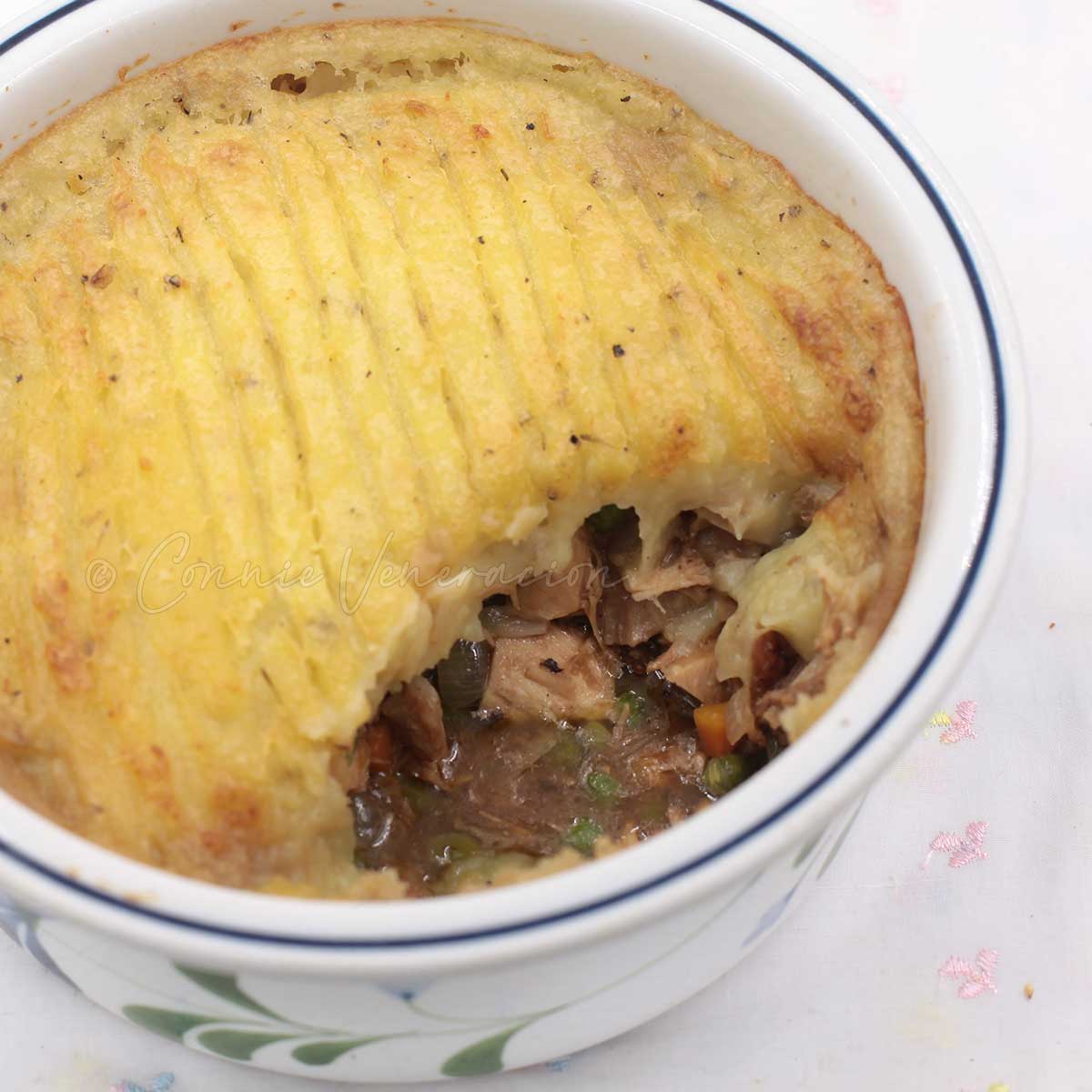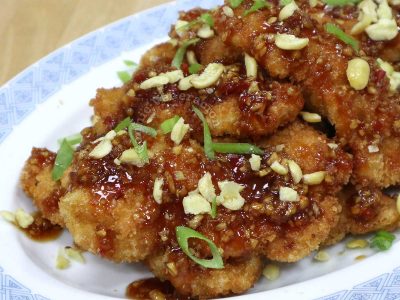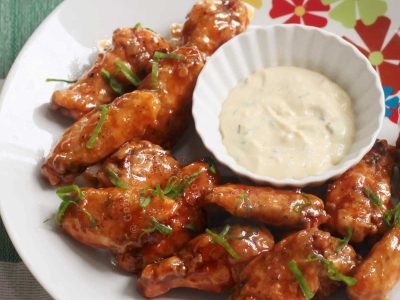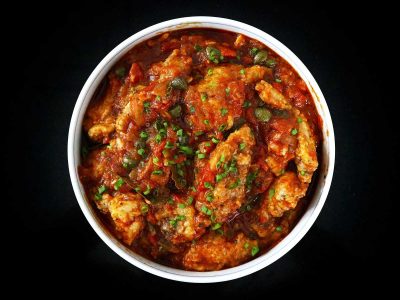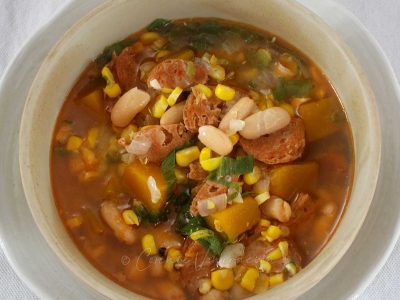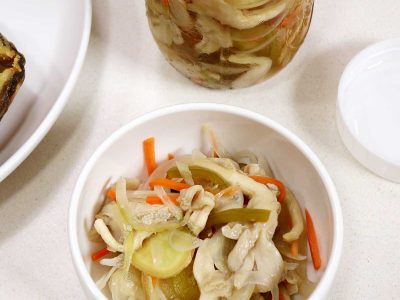We like duck more than turkey, to be honest. We rarely buy turkey much less roast a whole bird. There’s just too much white meat whereas duck as no white meat at all — even the breast is more red meat than white.
But, when entertaining, and especially when a huge crowd is coming over, roasting a whole turkey is so much less time consuming. Put the bird in the oven, make a gravy, a salad and one or carb-y side dishes, and you have more than enough to feed a crowd.
But we still manage to have leftovers. The turkey, carved on the table, will always have pieces of meat left attached to the bone. And those pieces are often enough to make an entirely new dish.
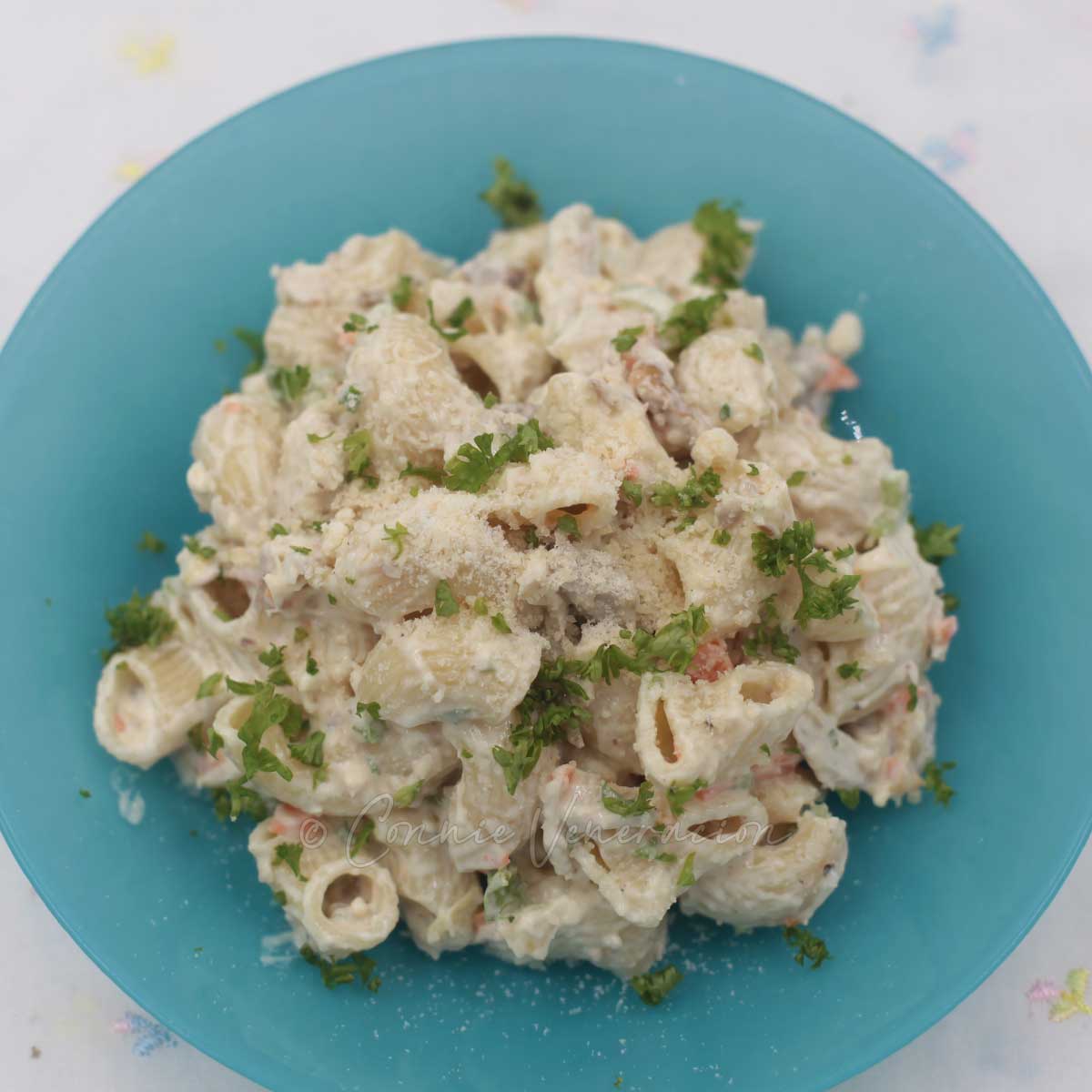
Chopping the meat and adding to macaroni salad had been my go-to solution to make good use of leftover roast turkey meat. I have tried shredded the meat too and mixing it with mayo to use as sandwich filling. There was one time when I added the turkey meat to a pot of soup and there was at least one time when I used it to cook fried rice.
But they all scream leftovers! Surely, there’s a better way to make leftover turkey more palatable and presentable. And so, this British-style mashed potato-topped turkey casserole was born.
Leftover roast turkey farmer’s pie
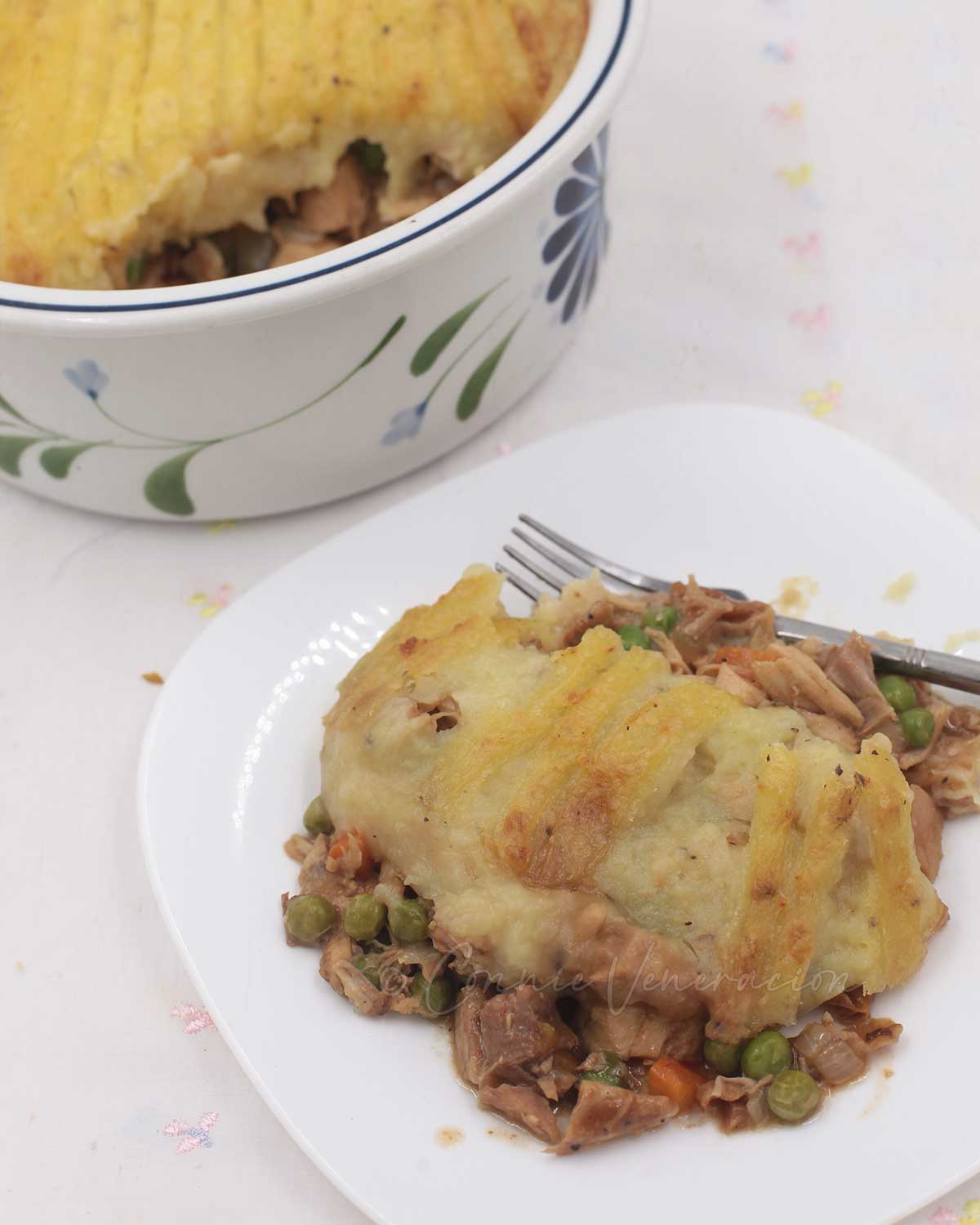
Ingredients
- ¼ cup butter
- ½ cup cubed carrot
- ½ cup chopped onion
- 4 cups cubed roast turkey meat
- ½ cup sweet peas thawed
- 1 cup onion gravy
- salt to taste
- pepper to taste
- 3 cups mashed potatoes
Instructions
- Preheat the oven to 375F.
- On the stovetop, melt the butter in a pan.
- Saute the carrot and onion for about a minute.
- Add the turkey meat and peas to the carrot and onion. Toss thoroughly to coat the turkey meat with butter.
- Pour in the gravy. Stir to distribute evenly. Bring to a simmer.
- Taste the turkey. You will need to add salt and pepper at this point. How much depends on how well seasoned the turkey and gravy are.
- When you’re happy with the taste, turn off the heat and transfer the contents of the pan to an ovenproof dish.
- Spread the mashed potatoes on top of the duck and vegetables. Lightly rake with a fork (optional).
- Bake the leftover roast turkey farmer’s pie at 375F for 20 to 30 minutes or until bubbly and the mashed potato topping is lightly browned.

